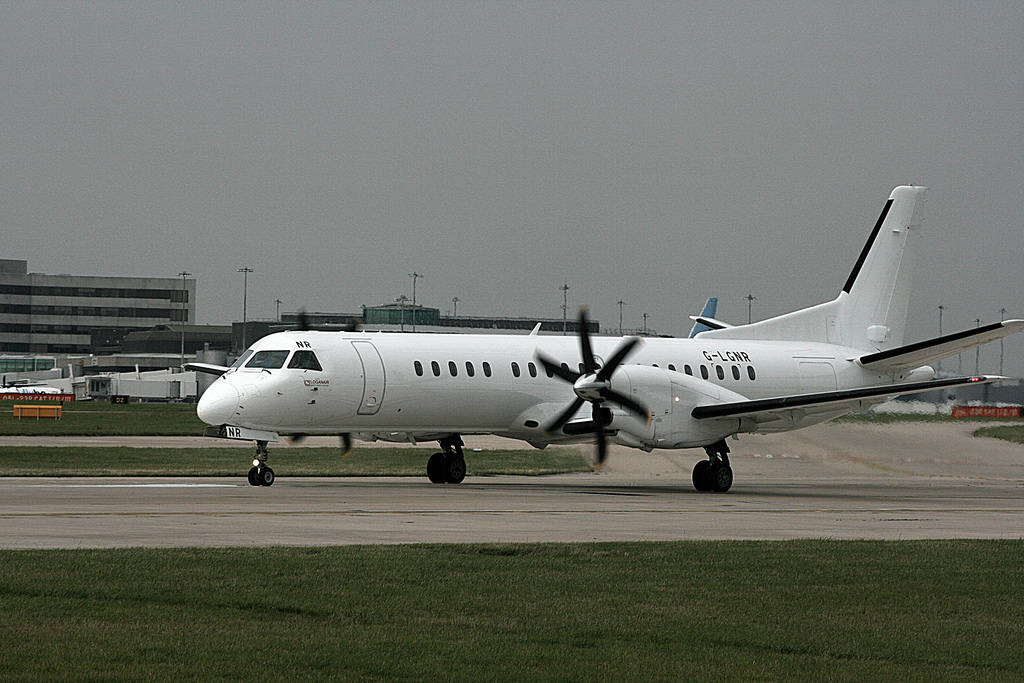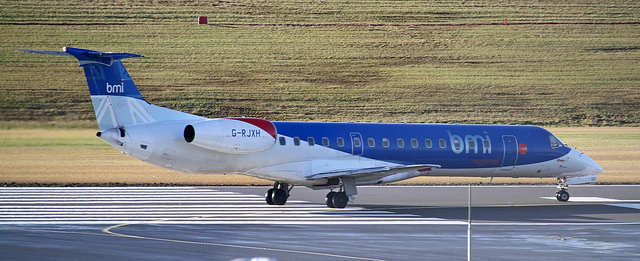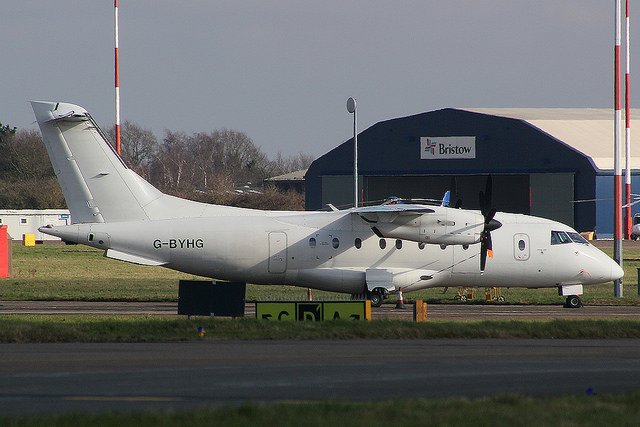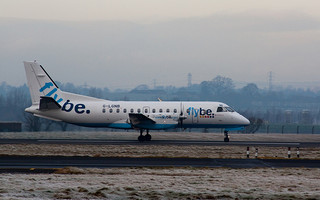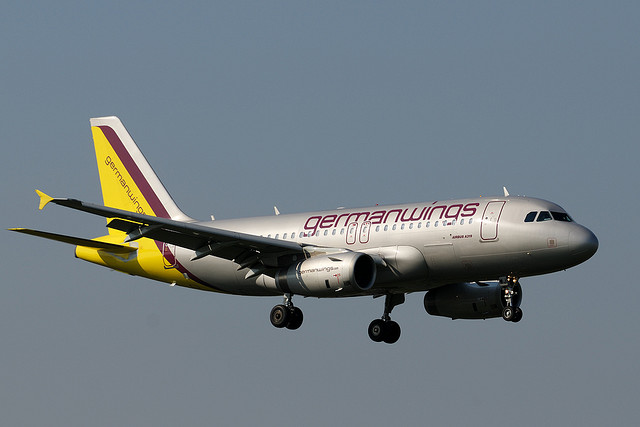Logan SB20 at Manchester on Nov 6th 2015, gear issue turns out as flight controls issue
Last Update: January 13, 2017 / 20:42:39 GMT/Zulu time
Incident Facts
Date of incident
Nov 6, 2015
Classification
Incident
Airline
Logan Air
Flight number
BE-6976
Departure
Manchester, United Kingdom
Destination
Inverness, United Kingdom
Aircraft Registration
G-LGNR
Aircraft Type
SAAB 2000
ICAO Type Designator
SB20
Passengers reported they were instructed to assume the brace position for landing.
The airline reported the crew received a caution indication from an aircraft's system and returned to Manchester as a precaution.
On Jan 13th 2017 the UK AAIB released their bulletin concluding the probable causes of the serious incident were:
The investigation established that there had been two separate faults on the aircraft: one involved the rudder trim position recorded on the QAR and the second the output from the left aileron position transducer.
The first fault, with the rudder position, involved a restriction which prevented the rudder pedals from moving. The restriction ceased when the pilot disconnected the autopilot and flew the aircraft manually, and the investigation was unable to determine the cause of the restriction.
The AAIB reported that shortly after takeoff, upon acceleration from 180 KIAS to 240 KIAS, the crew noticed an unusual attitude of the aircraft with 7 degrees nose up pitch and 10 degrees left bank while flying straight and level. The pilot flying alerted the pilot monitoring, together they cross checked the instruments and found a yellow "R MISTRIM" indication on the primary flight display indicating there were untrimmed forces on the aileron system. The pilot flying decided to disconnect the autopilot bracing the controls for the jolt, the jolt was more pronounced than normal. The pilot had difficulty maintaining straight and level flight, the ailerons controls felt "sloppy". The pilot reduced the speed to below 200 KIAS while the pilot monitoring checked the flight controls page on the secondary EICAS and noticed that both ailerons indicated deflected upwards at 17 degrees. The pilots concluded there was a problem with the aileron system. The AAIB wrote: "He read through the two aileron malfunction checklists it contained: ‘Aileron system jammed’ and ‘Aileron system open failure’. Neither seemed to fit the symptoms, but the pilots remained under the impression that something was wrong with the ailerons, and as the controls were not jammed they decided to action the ‘Aileron system open failure’ checklist. The pilots did not look outside the window to check the actual position of the ailerons, which can be seen from the cockpit if the ailerons are deflected up, and relied upon the SED synoptic page for indications of their deflection."
The crew pulled the ROLL handle to disconnect left and right ailerons, then flew the aircraft alternatively to find out who had better control of the aircraft, the captain had better control and remained pilot flying. The crew declared Mayday as it became clear the landing had to be done with compromised flight controls.
The AAIB described the landing: "The pilots decided to return to Manchester and informed ATC that the aircraft had a reduced turning capability. The cabin crew were briefed and the PM set the navigation system for an ILS approach to Runway 23R at Manchester. Passing 4,000 ft, the PF requested the selection of Flap 15 in order to check controllability. When the flaps had extended to 7° the PF observed that the aircraft was more difficult to control, and when extended to 13° he requested they be reselected back up. The pilots then planned for a Flap 0 landing and reset the Vref of 152 kt accordingly. At approximately 200 ft agl on the approach the TAWS ‘too low terrain’ and ‘glideslope’ cautions sounded. The PF could see the runway and the PAPIs clearly, and the aircraft landed safely."
The AAIB analysed:
The QAR data from the previous flight shows that the output from the left aileron position transducer was on occasions erratic. At the start of the incident flight the output from the aileron position transducers appeared normal; however later in the flight the output from the left transducer was erratic and unreliable.
The autopilot and rudder control systems appeared to operate normally until the aircraft reached an altitude of 1,200 ft when the rudder trim position moved from -1.5 to -21.3º in six seconds. In manual mode the fastest the trim actuator can move through this range is 12 seconds, and in automatic mode the movement would be slower. While the rudder trim position recorded on the QAR was obtained from Linear Voltage Differential Transformer 1 (LVDT1) through Data Concentrator Unit 1 (DCU1), the autotrim function is controlled by flight control computer (FCC) 2, through rudder control unit (RCU) 2, using positional data obtained from LVDT2 and DCU2 (the rudder trim position from LVDT2 is only recorded on the FDR). Following the replacement of RCU2 and the rudder trim actuator there were no further occurrences of erratic rudder trim positions recorded on the QAR or FDR. It is likely that as the autopilot, autotrim, and yaw damper all remained engaged, and no warnings or cautions were generated, that the signal from LVDT1 recorded on the QAR was erroneous. However, the evidence indicates that the signal from LVDT 2 which was used in the control of the trim actuator remained valid.
Following the disengagement of the autopilot, and before the aileron disconnect (roll handle) was operated, the pilots reported that both ailerons moved upwards by several degrees. This was also seen on the QAR data. As the aircraft slowed for landing, both ailerons appeared to move upwards to approximately 17°, which discussion with the manufacturer indicates should have caused the aircraft to pitch nose-up. However, data from the QAR shows that there had been no impact on the flight path; moreover there was no corresponding change in the elevator position to counter the effect of the ailerons. This suggests that at least one of the aileron position transducers was producing an erroneous signal.
The aircraft manufacturer reported they intended to take following safety action: "The manufacturer stated that it intended to add the following to the ‘Aileron system open failure’ section of the malfunction checklist at the next AOM revision: “NOTE: Verify an open failure by visually observing that one of the ailerons do not follow control wheel input.”"
Incident Facts
Date of incident
Nov 6, 2015
Classification
Incident
Airline
Logan Air
Flight number
BE-6976
Departure
Manchester, United Kingdom
Destination
Inverness, United Kingdom
Aircraft Registration
G-LGNR
Aircraft Type
SAAB 2000
ICAO Type Designator
SB20
This article is published under license from Avherald.com. © of text by Avherald.com.
Article source
You can read 2 more free articles without a subscription.
Subscribe now and continue reading without any limits!
Read unlimited articles and receive our daily update briefing. Gain better insights into what is happening in commercial aviation safety.
Send tip
Support AeroInside by sending a small tip amount.
Related articles
Logan E145 at Aberdeen on Oct 26th 2021, airline can't tell which alert occurred
A Logan Air Embraer ERJ-145, registration G-RJXH performing flight LM-16 from Aberdeen,SC to Norwich,EN (UK) with 27 passengers and 3 crew, was…
Logan D328 at Norwich on Feb 5th 2018, flaps problem
A Logan Air Dornier DO-328-100, registration G-BYHG performing flight LM-301 from Norwich,EN to Edinburgh,SC (UK) with 23 passengers and 3 crew, was…
Logan SF34 near Shetland Islands on Mar 4th 2014, icing problems
A Logan Air Saab 340B on behalf of FlyBe, registration G-LGNB performing flight LOG-6770/BE-6770 from Aberdeen,SC to Shetland Islands Sumburgh,SC…
Newest articles
Finnair A320 at Vienna on Oct 7th 2025, hydraulic leak and smoke
A Finnair Airbus A320-200, registration OH-LXD performing flight AY-1471 from Helsinki (Finland) to Vienna (Austria), landed on Vienna's runway 34,…
Eurowings A319 at Hamburg on Oct 8th 2025, fumes in cockpit
An Eurowings Airbus A319-100, registration D-AGWJ performing positioning flight EW-6970 from Hamburg to Dusseldorf (Germany) with 2 crew, was…
Subscribe today
Are you researching aviation incidents? Get access to AeroInside Insights, unlimited read access and receive the daily newsletter.
Pick your plan and subscribePartner

ELITE Simulation Solutions is a leading global provider of Flight Simulation Training Devices, IFR training software as well as flight controls and related services. Find out more.
SafetyScan Pro provides streamlined access to thousands of aviation accident reports. Tailored for your safety management efforts. Book your demo today
AeroInside Blog
Popular aircraft
Airbus A320Boeing 737-800
Boeing 737-800 MAX
Popular airlines
American AirlinesUnited
Delta
Air Canada
Lufthansa
British Airways
